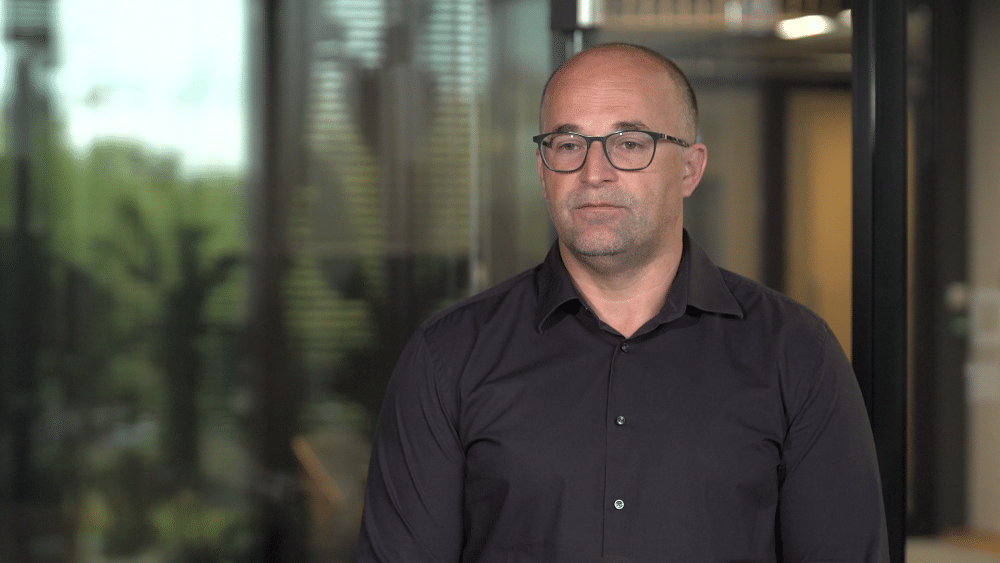Artificial intelligence and machine learning consume enormous amounts of energy. The implementation of these technologies on an ever-larger scale is causing a rapid increase in demand for data center services and, in turn, the amount of energy they need to serve their customers. Not to mention that data centers also utilize these innovative technologies to optimize their operations. This increase in energy consumption is leading data centers to find ways to optimize it, intending to reduce their carbon footprint. One method is to utilize the heat generated by server operation for heating purposes.
“Electricity consumption by data centers can be very diverse. Small centers consume less energy, while large ones require more. There are those that consume from 500 kW to many megawatts per hour, and those that reach two or even three-digit values in megawatts. New technologies, such as the widely known artificial intelligence, further contribute to higher energy consumption,” says Igor Grdic, Country Manager for Central and Eastern Europe at Vertiv, in an interview with Newseria Innowacje agency.
According to Vertiv, the largest data centers consume as much energy as 80,000 households.
“Data from the International Energy Agency indicate that in 2022 data centers accounted for 2 percent of all energy consumed worldwide. It’s worth mentioning that among these data centers, those used for cryptocurrency mining were included. Currently, consumption is about 480 TWh, and according to forecasts, it will exceed 800 TWh in 2026, which means a doubling of global electricity consumption to 4 percent,” predicts Igor Grdic.
The primary drivers of energy consumption in data centers are the development of artificial intelligence and machine learning. AI algorithms require immense computational power, which also translates into greater demand for energy. McKinsey experts predict that the energy load related to the use of AI in data centers will double by 2030. This in turn means an increasing carbon footprint of such facilities.
“Digitization is inevitable, and we could observe its particularly dynamic development during the COVID-19 pandemic. This contributes to generating a greater amount of data, which needs to be processed and stored, which increases the demand for data centers, which consume a lot of energy. The response to this is definitely renewable energy sources, which are able to support national power grids. It is also known that nuclear power plants can help meet this demand, although not on the scale as in the past when large nuclear power plants operated,” says the Vertiv expert.
One way to reduce the carbon footprint produced by data centers is to implement hybrid power systems. They use various energy sources, both renewable and non-renewable, and these facilities can meet their energy needs while simultaneously reducing harmful emissions into the atmosphere.
Data center operators also use AI algorithms to optimize operations. This, in turn, leads to greater energy consumption, and hence an increase in heat in these facilities. To ensure the proper functioning of servers, it is necessary to maintain the appropriate temperature. Therefore, energy is used for this purpose, but operators are also looking for other cooling possibilities.
“Some data centers use water, depending on the cooling solutions used. These can be solutions based on a refrigerant with a direct evaporation system (DX) or on water cooling. However, the main source of energy used in data centers is electricity,” points out Igor Grdic.
Liquid cooling is a system that uses a closed water loop, which can store heated air and use it to provide heat, for example, in nearby households, homes or offices. To implement such mechanisms, it is necessary to use tools based on artificial intelligence. Automation of the cooling process and integrating it with AI can indirectly also make energy savings easier. Algorithms monitor the temperature and server loads and based on this data can independently determine how much power is needed to cool the system.
“A goal on a global scale is to use this thermal energy. This can be done in several ways – one of the most commonly used, also in Europe, is supplying heat stations, which can provide heating to residents at very low or zero costs. This is currently one of the most common methods of reusing heat energy based on heat pumps and similar. The latest regulations regarding data centers indicate that in the future they should reuse a certain part of the generated thermal energy, which will certainly benefit local communities,” indicates the expert.
Directive 2012/27/EU assumes a reduction in CO2 emissions of 11.7 percent by 2030, thanks to the use of waste heat. The document also contains a provision concerning data centers. According to it, if an operator’s IT infrastructure consumes more than 500 kW of power, this fact, along with information about the greenhouse gas emissions generated by the facility, should be reported directly to the EC.
Own power sources also serve to implement energy savings, and they are increasingly used in data centers, which use UPS emergency power supplies, energy storage systems in batteries (BESS), and fuel cells. For example, by using UPS emergency power supplies equipped with advanced functions, it is possible to export the excess accumulated energy back to the power grid. BESS, on the other hand, enables efficient management of the drawn energy, which can be supplied to the data center in case of unavailability of renewable sources. This allows entities supported by the system to still have access to power, the generation of which results in significantly lower greenhouse gas emissions. This method can increase the efficiency of a data center by even 50 percent.
